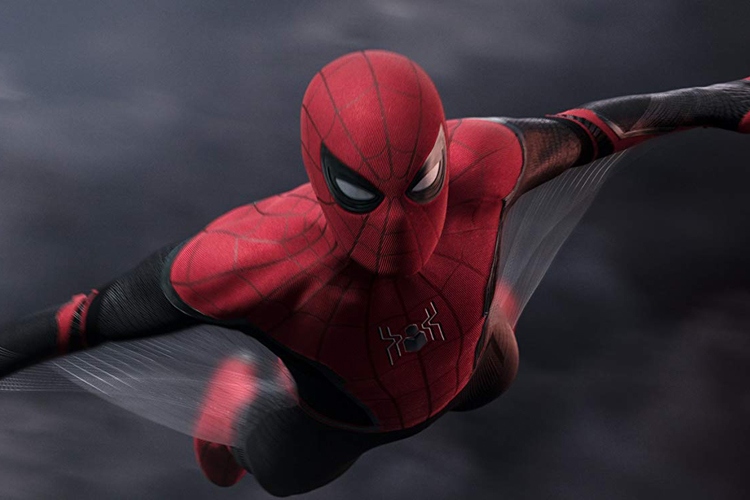It’s only been a couple months since the decisive conclusion of Avengers: Endgame, but the Marvel Cinematic Universe is already lurching back into theaters to really end Phase 3 of their infinite movie plan. It’s curious that they chose Spider-Man: Far From Home as their Phase 3 finale—Spider-Man: Homecoming was a small-scale, self-contained romp compared to the rest of the MCU, so it’s hard to imagine Spidey topping off the Avengers ice cream with a big enough cherry. But you know what they say, go big or go home—so here we are, huge and far from home.
Yes, this Spidey sequel is moving out of the friendly neighborhood, and not just in terms of setting. In Homecoming, Peter fought a (relatively) small-time criminal in his hometown; in Far From Home, he’s saving the world all over the world. He hasn’t fully graduated to the big time, though: Peter’s still a high school student, and many of his concerns are still local. He wants to relax on his school’s Europe trip and tell MJ he likes her (like, like likes her). That’s the balancing act Far From Home has to pull off: making the small stakes and the big stakes simultaneously compelling.
The movie is half-successful at this, as its fragmented structure often gets in the way. If you’ve ever traveled through multiple countries, states, or places in general—especially if you’ve done so with other people—you know how consequential the in-between trips can be: the train rides, the long hours in the car, the conversations and the close proximity. Aside from one or two scenes that are played for comic relief, Far From Home mostly just cuts to the chases and destinations. The screenplay tends to relegate one important event to each stop of the trip—an inciting incident in Venice, a plot twist in Prague—which gives the movie a disjointed, episodic flow. There’s not enough downtime to let the small stakes simmer or the big stakes sink in.
The lack of downtime also makes the movie feel Spider-Man 3 levels of busy. There are a lot of moving pieces here: Mysterio, giant elemental beings, post-Endgame worldbuilding, romantic subplots, Tony Stark’s legacy, new MacGuffins, and more. It doesn’t help that Far From Home, despite its central conceit, plays its themes pretty close to home. A villainous backlash to a corporate monolith, Peter fumbling his responsibility and worsening the problem, the tangled web of work/life balance—too much of this crowded field is Homecoming retread. Sam Raimi used his three Spider-Man movies to explore three different aspects of the character; the MCU is exploring them all at once, all over again.
Far From Home has a saving grace, though, and that’s its tone. Screenwriters Chris McKenna and Erik Sommers have written exclusively lighthearted fare, and director Jon Watts is clearly in line with their vision. When the movie is having fun, it’s a youthful, uncomplicated bolt of energy. Watts and Holland have once again captured the definitive Peter Parker of the comics, and watching him navigate his way through emerging adulthood is sweet and affecting, when the movie has time for it.
No one’s having more fun than Jake Gyllenhaal, though. He knows he’s in a comic book movie, and his performance is a mashup of his weirdest performance quirks—like a goofy synthesis of his roles in Nightcrawler and Okja. If there’s anyone signaling that you shouldn’t be taking this movie too seriously, it’s Gyllenhaal’s Mysterio. The only drawback of his character is that his ‘magical’ abilities bog the third act down with plastic-y, CGI-heavy action scenes.
From beginning to end, Far From Home’s good-natured earnestness keeps the whole thing from collapsing into itself. Hopefully one day, Sony and Marvel will learn to stop cramming their Spider-Man movies with more than they can handle. Even if you’re feeling a bit overstuffed by the end, make sure to stick around for the mid-credits scene: it features the best cameo in the MCU so far.
★★★ (3/5)




